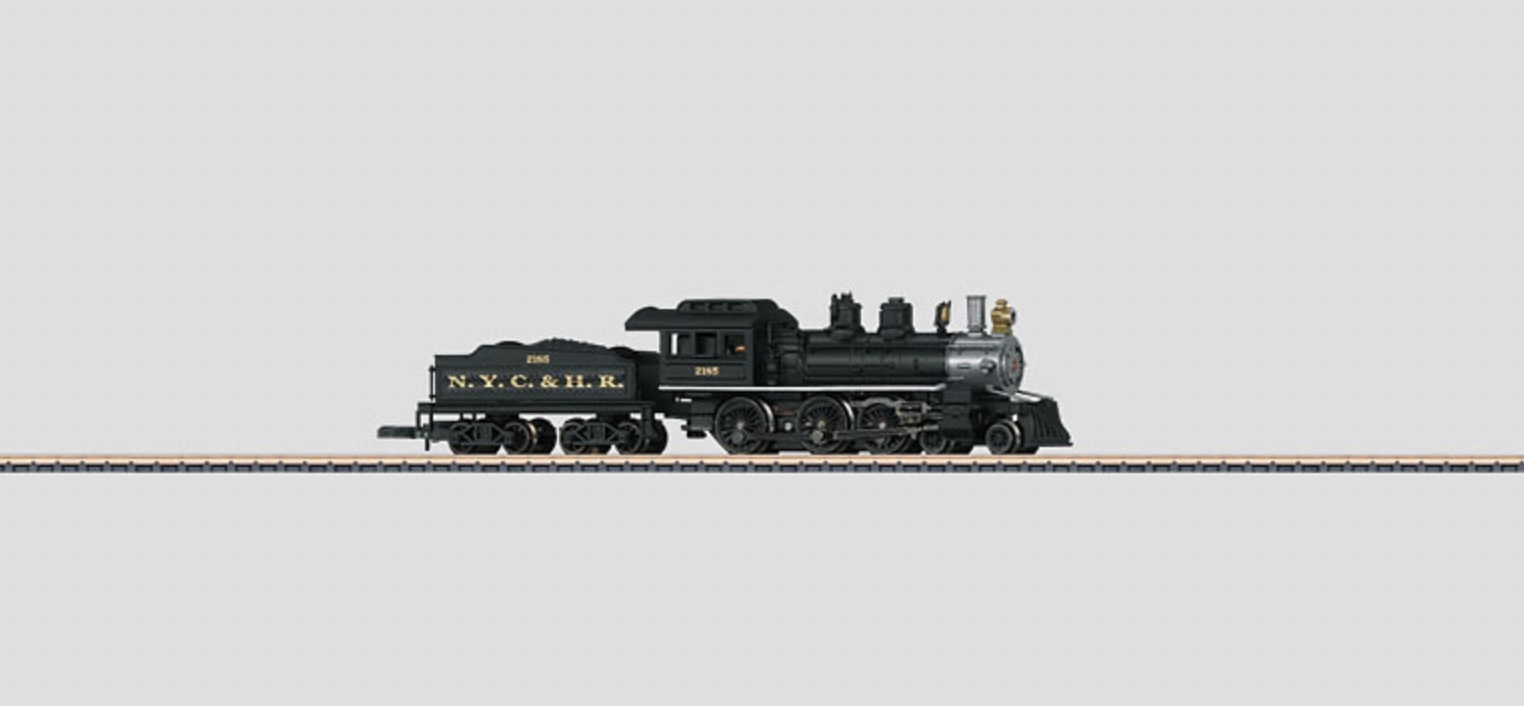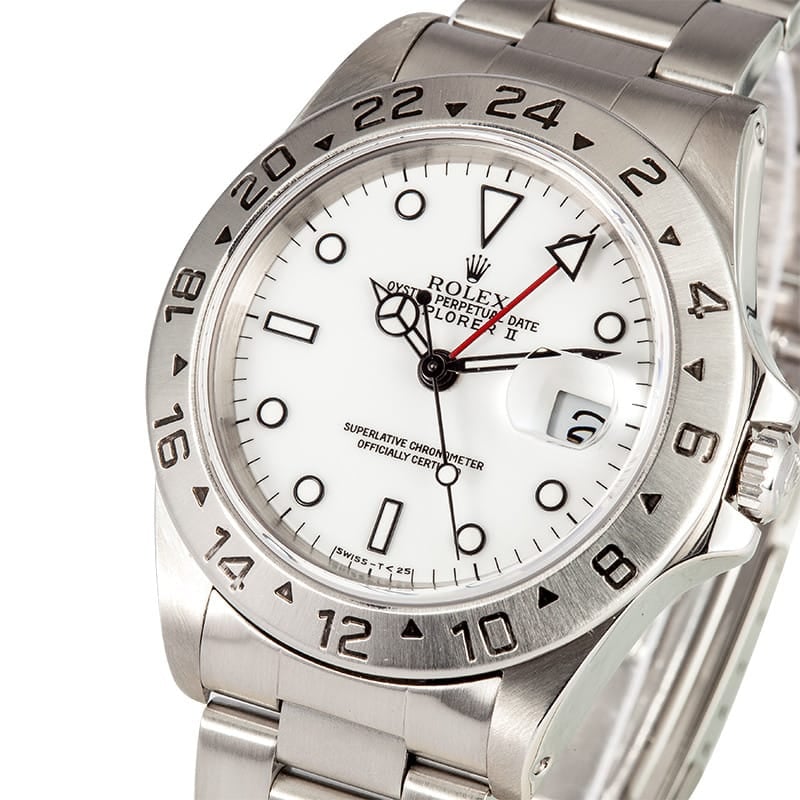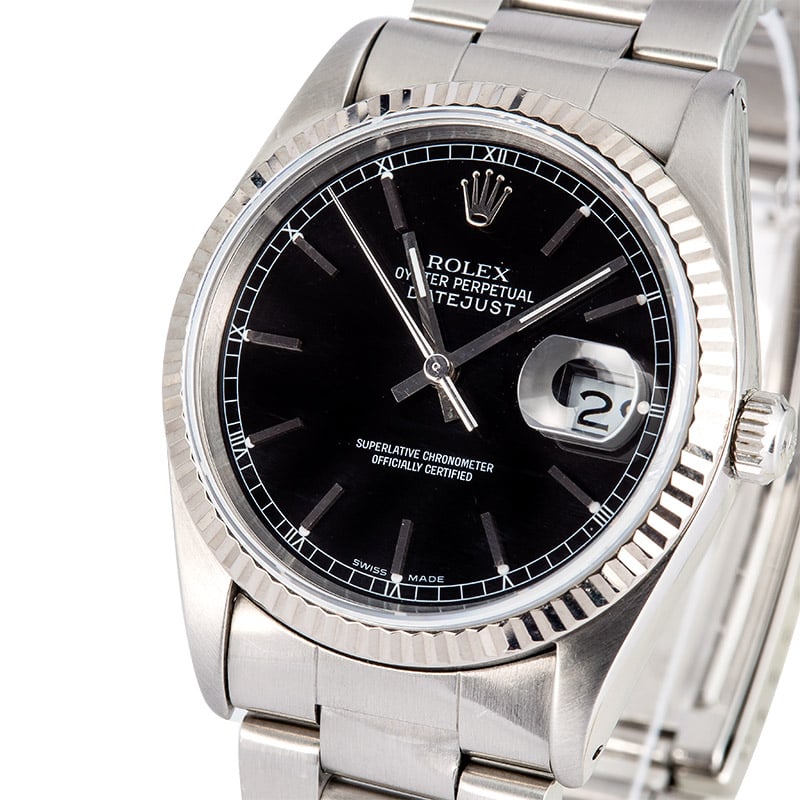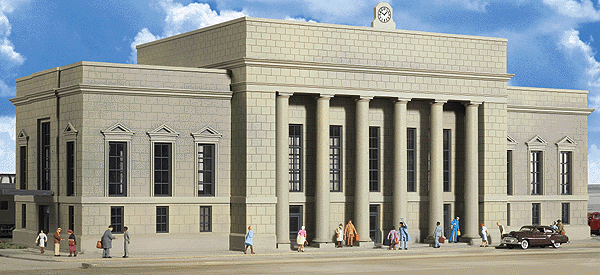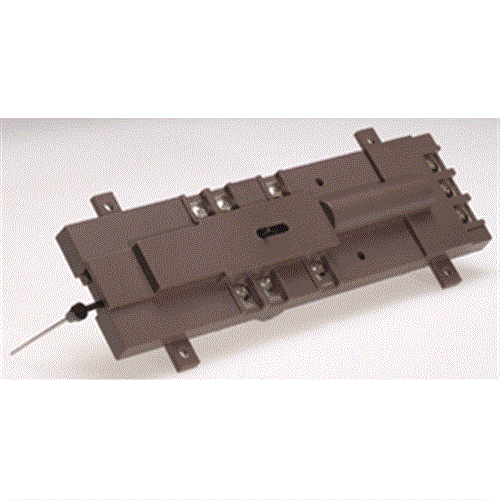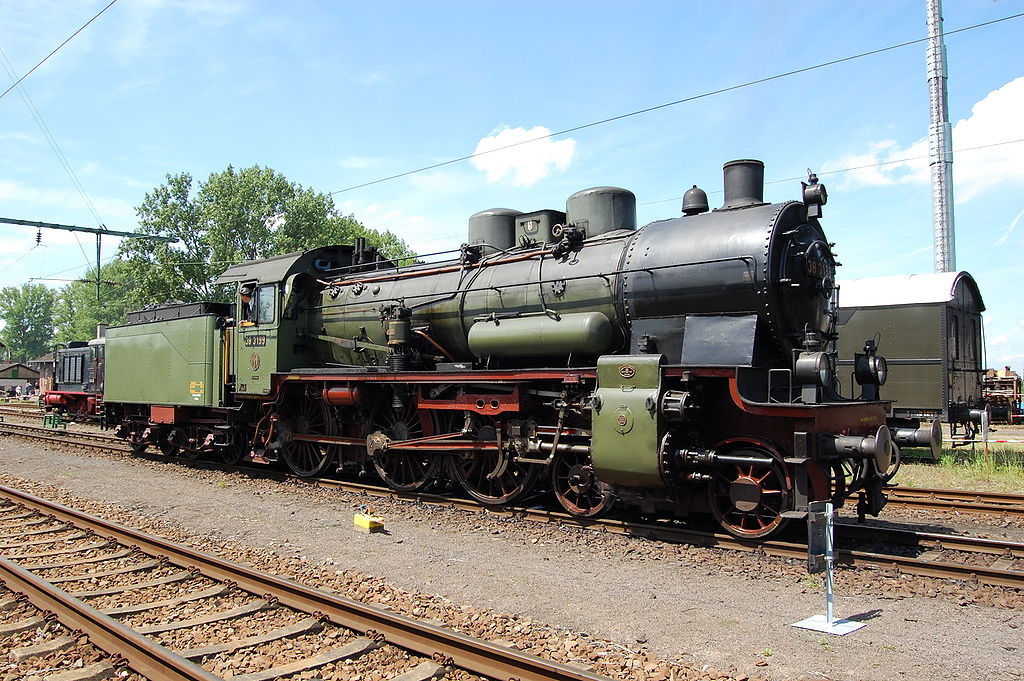Specific Item Information: American steam locomotive with a tender, 4-6-0 wheel arrangement.
Prototype History: Under the Whyte notation for the classification of steam locomotives by wheel arrangement, 4-6-0 represents the configuration of four leading wheels on two axles in a leading bogie, six powered and coupled driving wheels on three axles and no trailing wheels. In the mid 19th century, this wheel arrangement became the second most popular configuration for new steam locomotives in the United States of America, where this type is commonly referred to as a Ten-wheeler. As a locomotive pulling trains of light weight all wood passenger cars in the 1890-1920s, it was exceptionally stable at near 100 mph speeds on the New York Central's New York to Chicago Water Level Route and on the Reading Railroad's Camden to Atlantic City, NJ, line. As passenger equipment grew heavier with all steel construction, heavier locomotives replaced the Ten Wheeler.
From Wikipedia
From Wikipedia
Road Name History: 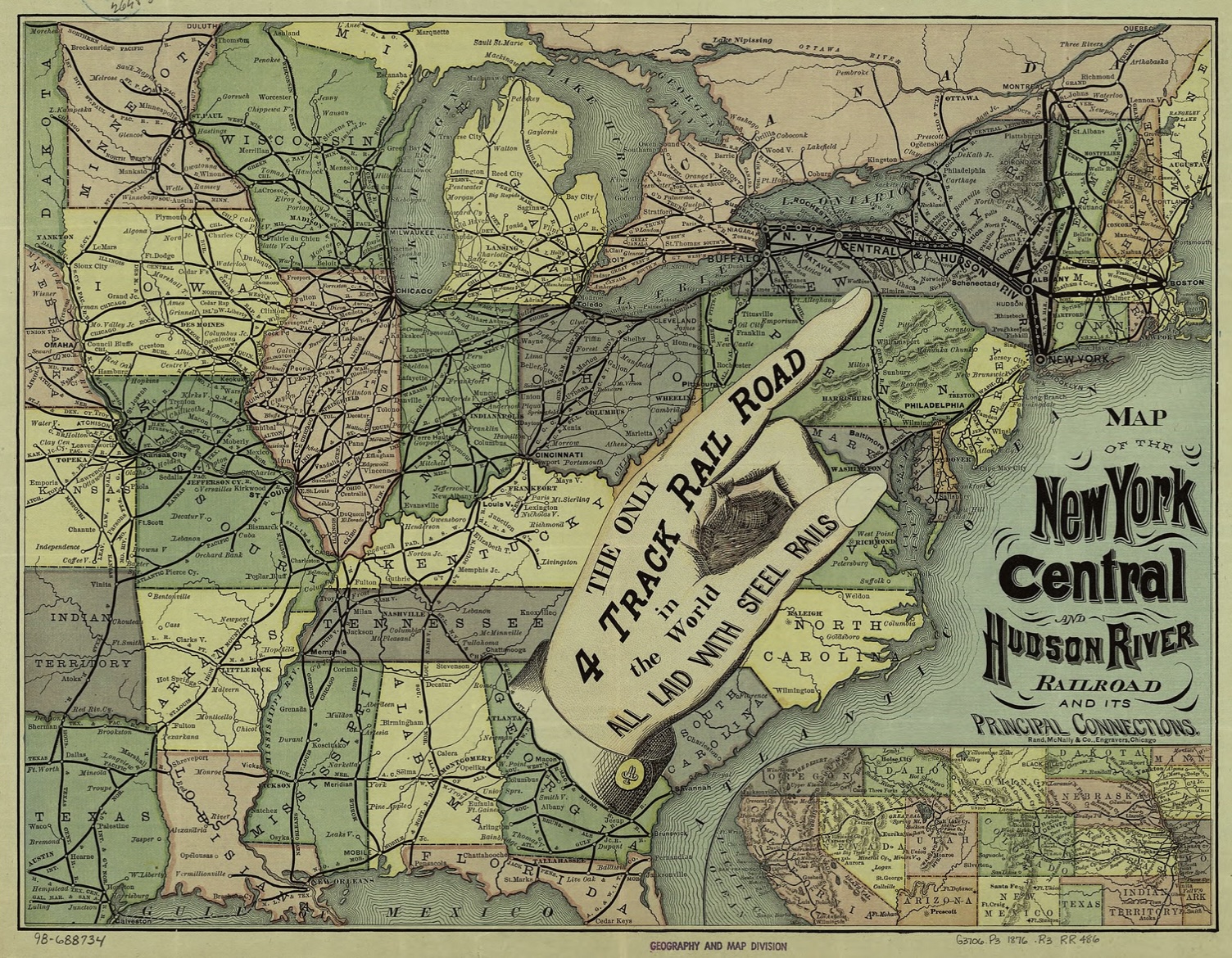 In 1867, Cornelius Vanderbilt acquired control of the Albany to Buffalo-running NYC, with the help of maneuverings related to the Hudson River Bridge in Albany. On November 1, 1869, he merged the NYC with his Hudson River Railroad to form the New York Central and Hudson River Railroad. This extended the system south from Albany along the east bank of the Hudson River to New York City, with the leased Troy and Greenbush Railroad running from Albany north to Troy.
In 1867, Cornelius Vanderbilt acquired control of the Albany to Buffalo-running NYC, with the help of maneuverings related to the Hudson River Bridge in Albany. On November 1, 1869, he merged the NYC with his Hudson River Railroad to form the New York Central and Hudson River Railroad. This extended the system south from Albany along the east bank of the Hudson River to New York City, with the leased Troy and Greenbush Railroad running from Albany north to Troy.
Vanderbilt's other lines were operated as part of the NYC; these included the New York and Harlem Railroad, Lake Shore and Michigan Southern Railway, Canada Southern Railway and Michigan Central Railroad.
The Spuyten Duyvil and Port Morris Railroad was chartered in 1869 and opened in 1871, providing a route on the north side of the Harlem River for trains along the Hudson River to head southeast to the New York and Harlem Railroad. Trains could head toward Grand Central Depot, built by NYC and opened in 1871, or to the freight facilities at Port Morris. From opening, it was leased by the NYC.
The Geneva and Lyons Railroad was organized in 1877 and opened in 1878, leased by the NYC from opening. This was a connection between Syracuse and Rochester, running from the main line at Lyons to the Auburn Road at Geneva. It was merged into the NYC in 1890.
In 1885, the New York, West Shore and Buffalo Railway, a competitor since 1883 with trackage along the west shore of the Hudson River and on to Buffalo closely paralleling the NYC, was taken over by the NYC as the West Shore Railroad and developed passenger, freight, and car float operations at Weehawken Terminal. The NYC assumed control of the Pittsburgh and Lake Erie and Boston and Albany Railroads in 1887 and 1900, respectively, with both roads remaining as independently-operating subsidiaries. William H. Newman, president of the New York Central lines, resigned in 1909. Newman had been president since 1901, when he replaced Samuel R. Callaway (who had replaced Depew as president in 1898).
In 1914, the operations of eleven subsidiaries were merged with the New York Central & Hudson River Railroad, re-forming the New York Central Railroad. From the beginning of the merger, the railroad was publicly referred to as the New York Central Lines. In the summer of 1935, the identification was changed to the New York Central System, that name being kept until the merger with the Pennsylvania Railroad in 1968..From Wikipedia

Vanderbilt's other lines were operated as part of the NYC; these included the New York and Harlem Railroad, Lake Shore and Michigan Southern Railway, Canada Southern Railway and Michigan Central Railroad.
The Spuyten Duyvil and Port Morris Railroad was chartered in 1869 and opened in 1871, providing a route on the north side of the Harlem River for trains along the Hudson River to head southeast to the New York and Harlem Railroad. Trains could head toward Grand Central Depot, built by NYC and opened in 1871, or to the freight facilities at Port Morris. From opening, it was leased by the NYC.
The Geneva and Lyons Railroad was organized in 1877 and opened in 1878, leased by the NYC from opening. This was a connection between Syracuse and Rochester, running from the main line at Lyons to the Auburn Road at Geneva. It was merged into the NYC in 1890.
In 1885, the New York, West Shore and Buffalo Railway, a competitor since 1883 with trackage along the west shore of the Hudson River and on to Buffalo closely paralleling the NYC, was taken over by the NYC as the West Shore Railroad and developed passenger, freight, and car float operations at Weehawken Terminal. The NYC assumed control of the Pittsburgh and Lake Erie and Boston and Albany Railroads in 1887 and 1900, respectively, with both roads remaining as independently-operating subsidiaries. William H. Newman, president of the New York Central lines, resigned in 1909. Newman had been president since 1901, when he replaced Samuel R. Callaway (who had replaced Depew as president in 1898).
In 1914, the operations of eleven subsidiaries were merged with the New York Central & Hudson River Railroad, re-forming the New York Central Railroad. From the beginning of the merger, the railroad was publicly referred to as the New York Central Lines. In the summer of 1935, the identification was changed to the New York Central System, that name being kept until the merger with the Pennsylvania Railroad in 1968..From Wikipedia
Brand/Importer Information: Gebr. Märklin & Cie. GmbH or Märklin (MÄRKLIN or MAERKLIN in capital letters) is a German toy company. The company was founded in 1859 and is based at Göppingen in Baden-Württemberg. Although it originally specialized in doll house accessories, today it is best known for model railways and technical toys. In some parts of Germany and in Sweden, the company's name is almost synonymous with model railroads.
Märklin introduced Z Scale in 1972. Connoisseurs appreciate Märklin Z as much as the most inveterate modeler: The charm of these finely constructed gems is best seen in the smallest of space. Because, this scale with all kinds of precision translated into 1:220 scale awaits you with almost unlimited operating enjoyment. It doesn't get any better.
Märklin introduced Z Scale in 1972. Connoisseurs appreciate Märklin Z as much as the most inveterate modeler: The charm of these finely constructed gems is best seen in the smallest of space. Because, this scale with all kinds of precision translated into 1:220 scale awaits you with almost unlimited operating enjoyment. It doesn't get any better.
Item created by: CNW400 on 2022-08-02 15:09:06
If you see errors or missing data in this entry, please feel free to log in and edit it. Anyone with a Gmail account can log in instantly.
If you see errors or missing data in this entry, please feel free to log in and edit it. Anyone with a Gmail account can log in instantly.


